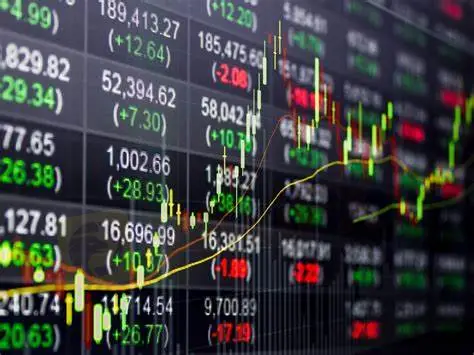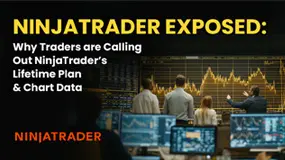简体中文
繁體中文
English
Pусский
日本語
ภาษาไทย
Tiếng Việt
Bahasa Indonesia
Español
हिन्दी
Filippiiniläinen
Français
Deutsch
Português
Türkçe
한국어
العربية
Understanding Market Capital in Stock Trading: A beginner’s guide for South African Traders.
Abstract:Market capitalization refers to the total dollar value of all outstanding shares of a company at the current market price. It is simply the aggregate invested capital of a company represented in a dollar amount.
By: Chime Amara

What is Market capitalization?
Market capitalization refers to the total dollar value of all outstanding shares of a company at the current market price. It is simply the aggregate invested capital of a company represented in a dollar amount. Since it represents the “market” value of a company, it is computed based on the current market price (CMP) of its shares and the total number of outstanding shares. Similarly, Market capitalization, also known as “market cap”, is also used to compare and categorize the size of companies among investors and analysts.
How to calculate Market Capital
Market cap is calculated by multiplying a company's outstanding shares by the current market price of one share. Since a company has a given number of outstanding shares, multiplying X with the per-share price represents the total dollar value of the company.
Formula and Calculation
The formula for market cap is:
{Market Cap} = {Price Per Share} X { Outstanding Shares }
Market Cap = Price Per Share X Outstanding Shares
Types of Market Capitalization
There are broadly six main classification of Market capital such as: Mega Cap, Large Cap, Mid Cap, Small Caps, Micro Cap and Nano Cap. A little explanation for each can be seen below:
Mega Cap
This refers to companies with a market cap of $200 billion and above. They are the largest publicly traded companies by market value, and typically represent the leaders of a particular industry sector or market. Only a few companies qualify under this category due to the large amount of capital involved.
For instance Apple (AAPL) has a market cap of over $2.3 trillion, while online retailer Amazon.com (AMZN) stands next with over $1.67 trillion market cap.
Large Cap
These refer to those companies with a total market cap between $10 billion to $200 billion. For example, International Business Machines Corp. (IBM) and General Electric (GE) are large-cap stocks with market caps of $125 billion and $117 billion, respectively.
Both mega and large-cap stocks caps are referred to as blue chips and are considered to be relatively stable and secure. However, there is no guarantee of these companies maintaining their stable valuations as all businesses are subject to market risks.
Mid Cap
Mid-cap is the term given to companies with a market capitalization—or market value—between $2 and $10 billion.
Small Caps
A small-cap stocks refers to those that has a total share value of $300 million to $2 billion, although the precise figures used vary among brokerages. Small cap here is used to refer to those young companies that may have promising growth potential, a few established old businesses which may have lost value in recent times for a variety of reasons also figure in this list.
Micro Cap
Companies that are considered micro-cap consist mostly of penny stocks—this category denotes companies with market capitalizations between $50 million to $300 million. Often Micro cap refers to those companies that are still at their developmental stage. While the upward potential of such companies is high if they succeed, the downside potential is equally worse if they completely fail. Investments in such companies may not be for the faint-hearted and require more due diligence.
Nano Cap
Nano cap refers to small, publicly traded companies with a market capitalization below $50 million. Often, the Nano market caps have a high-risk, high-reward layer beyond the micro-caps. These companies are considered to be the riskiest, and the potential for gain varies widely.

Disclaimer:
The views in this article only represent the author's personal views, and do not constitute investment advice on this platform. This platform does not guarantee the accuracy, completeness and timeliness of the information in the article, and will not be liable for any loss caused by the use of or reliance on the information in the article.
Read more

Seaprimecapitals Withdrawal Problems: A Complete Guide to Risks and User Experiences
Worries about Seaprimecapitals withdrawal problems and possible Seaprimecapitals withdrawal delay are important for any trader. Being able to get your money quickly and reliably is the foundation of trust between a trader and their broker. When questions come up about this basic process, it's important to look into what's causing them. This guide will tackle these concerns head-on, giving you a clear, fact-based look at Seaprimecapitals' withdrawal processes, user experiences, and trading conditions. Most importantly, we'll connect these real-world issues to the single most important factor behind them: whether the broker is properly regulated. Understanding this connection is key to figuring out the real risk to your capital and making a smart decision.

iFX Brokers Review: Do Traders Face Withdrawal Issues, Deposit Credit Failures & Free Coupon Mess?
Have you had to pay several fees at iFX Brokers? Had your trading profit been transferred to a scamming website, causing you losses? Failed to receive withdrawals from your iFX Brokers trading account? Has your deposit failed to reflect in your trading account? Got deceived in the name of a free coupon? Did the broker officials not help you in resolving your queries? Your problems resonate with many of your fellow traders at iFX Brokers. In this iFX Brokers review article, we have explained these problems and attached traders’ screenshots. Read on!

NinjaTrader Exposed: Why Traders are Calling Out NinjaTrader’s Lifetime Plan & Chart Data
Did NinjaTrader onboard you in the name of the Lifetime Plan, but its ordinary customer service left you in a poor trading state? Do you witness price chart-related discrepancies on the NinjaTrader app? Did you have to go through numerous identity and address proof checks for account approval? These problems occupy much of the NinjaTrader review online. In this article, we have discussed these through complaint screenshots. Take a look!

World Forex Review: Does the Broker Deny Withdrawals and Scam Traders via Fake Bonuses?
Does World Forex prove to be a not-so-happy trading experience for you? Do you struggle to withdraw your funds from the Saint Vincent and the Grenadines-based forex broker? Do you witness hassles depositing funds? Failing to leverage the World Forex no deposit bonus, as it turned out to be false? These accusations are grabbing everyone’s attention when reading the World Forex review online. In this article, we have shared some of these. Read on!
WikiFX Broker
Latest News
Axi Review: A Data-Driven Analysis for Experienced Traders
INZO Regulation and Risk Assessment: A Data-Driven Analysis for Traders
Pepperstone CEO: “Taking Down Scam Sites Almost Every Day” Becomes “Depressing Daily Business”
The CMIA Capital Partners Scam That Cost a Remisier Almost Half a Million
Is Seaprimecapitals Regulated? A Complete Look at Its Safety and How It Works
eToro Cash ISA Launch Shakes UK Savings Market
Cleveland Fed's Hammack supports keeping rates around current 'barely restrictive' level
Delayed September report shows U.S. added 119,000 jobs, more than expected; unemployment rate at 4.4%
Close Up With WikiFX —— Take A Close Look At Amillex
GGCC Bonus and Promotions: A Data-Driven Analysis for Experienced Traders
Currency Calculator



